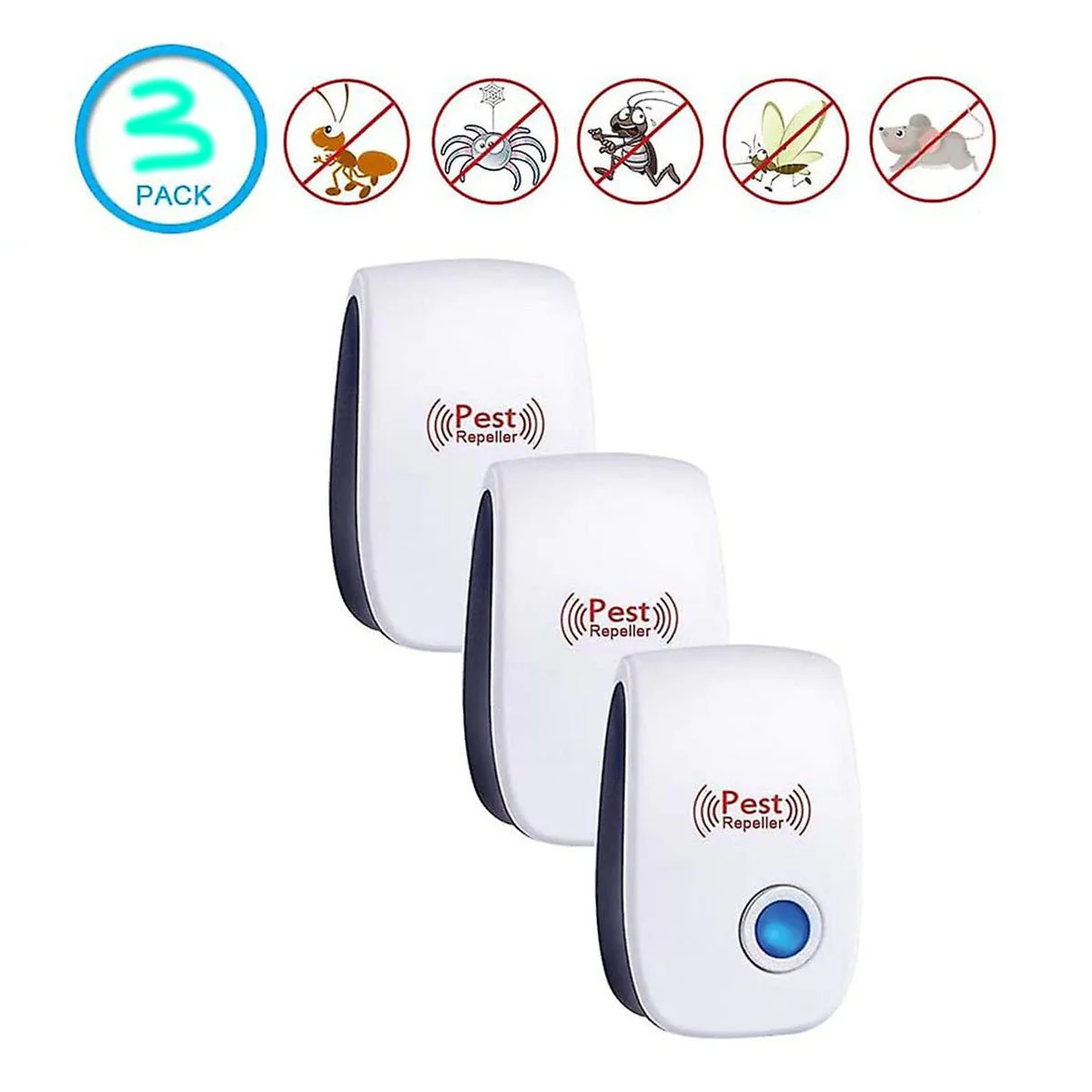Ultrasonic Pest Repellers: Do They Really Work?
Pests in the home or workplace can be a nuisance, and finding effective, humane, and environmentally friendly solutions is a priority for many. One product that has gained significant attention in recent years is the ultrasonic pest repeller. These devices promise to repel pests like rodents, insects, and other unwanted critters using high-frequency sound waves that are undetectable to humans. But do they actually work? Let’s explore the science, claims, and effectiveness of ultrasonic pest repellers.
What Are Ultrasonic Pest Repellers?
An ultrasonic pest repeller is an electronic device designed to emit high-frequency sound waves, typically above the range of human hearing (20 kHz or higher). These sound waves are said to disturb pests, making their environment uncomfortable and forcing them to leave the area. Manufacturers often market these devices as a chemical-free, humane, and eco-friendly alternative to traditional pest control methods like traps or pesticides
1.The devices are typically small, plug-in units that can be placed in various locations around the home or office. They are advertised as being effective against a wide range of pests, including rodents, cockroaches, mosquitoes, spiders, and even ticks.
How Do Ultrasonic Pest Repellers Claim to Work?
The idea behind ultrasonic pest repellers is relatively simple. The devices emit sound waves at frequencies that are unpleasant or disorienting to pests but inaudible to humans and most pets. These sound waves are believed to interfere with the pests’ communication, navigation, and ability to detect food sources, ultimately driving them away from the area
2.Manufacturers often claim that these devices:
- Create a pest-free zone within a certain radius.
- Work silently without disturbing humans or pets.
- Are safe, non-toxic, and environmentally friendly.
The Science Behind Ultrasonic Pest Repellers
While the concept of using sound waves to repel pests is appealing, the scientific evidence supporting the effectiveness of ultrasonic pest repellers is limited and often contradictory. Here’s what research and experts have to say:
- Lack of Consistent Results
Laboratory tests have shown that ultrasonic pest repellers often fail to deliver the results promised by manufacturers. In many cases, pests either do not respond to the sound waves or quickly adapt to them, rendering the devices ineffective 3. - FTC Guidelines and Misleading Claims
Some manufacturers of ultrasonic pest repellers have been found to violate Federal Trade Commission (FTC) guidelines by making exaggerated or false claims about their products’ effectiveness. This has led to skepticism about the reliability of these devices. - Limited Repellency
Studies have found that ultrasonic pest repellers may have a low-level repellency effect on certain pests, such as ticks, but this effect is often insufficient to provide meaningful protection. For example, research on the Australian paralysis tick concluded that ultrasonic devices could not be recommended for preventing tick bites 4. - Pest-Specific Effectiveness
Some pests, like rodents, may initially react to ultrasonic sound waves, but they often become habituated to the noise over time. Other pests, such as cockroaches and mosquitoes, may not be affected at all.
Advantages of Ultrasonic Pest Repellers
Despite the skepticism surrounding their effectiveness, ultrasonic pest repellers do have some advantages that make them appealing to consumers:
- Chemical-Free and Non-Toxic
Ultrasonic pest repellers do not rely on harmful chemicals or pesticides, making them a safer option for households with children and pets 5. - Ease of Use
These devices are simple to use—just plug them into an electrical outlet, and they start working immediately. There’s no need for complicated setups or maintenance. - Silent Operation
Since the sound waves are inaudible to humans, ultrasonic pest repellers operate silently, making them a discreet option for pest control. - Eco-Friendly
Ultrasonic pest repellers are marketed as an environmentally friendly alternative to traditional pest control methods, as they do not involve traps, poisons, or other harmful substances 1.
Disadvantages and Limitations
While ultrasonic pest repellers have their benefits, they also come with significant drawbacks:
- Questionable Effectiveness
The most significant issue with ultrasonic pest repellers is their inconsistent and often negligible effectiveness. Many studies have shown that these devices do not work as advertised, and pests may not be deterred at all. - Limited Range
Ultrasonic sound waves do not travel well through walls, furniture, or other obstacles, which limits the effective range of these devices. This means you may need multiple units to cover a single room or area. - Pest Adaptation
Even if pests initially respond to the sound waves, they may quickly adapt and become desensitized, reducing the long-term effectiveness of the device. - Not a Comprehensive Solution
Ultrasonic pest repellers are not a standalone solution for pest control. They may need to be used in conjunction with other methods, such as traps, sealing entry points, and maintaining cleanliness 1.
Are Ultrasonic Pest Repellers Worth It?
The effectiveness of ultrasonic pest repellers remains a topic of debate. While they may provide some level of repellency for certain pests, the scientific evidence suggests that they are not a reliable or comprehensive solution for pest control. Many experts recommend using proven methods, such as traps, baits, and professional pest control services, instead of relying solely on ultrasonic devices
3.If you’re considering purchasing an ultrasonic pest repeller, it’s essential to manage your expectations. These devices may work in some situations, but they are unlikely to eliminate a pest infestation on their own.
Tips for Effective Pest Control
For a more effective approach to pest control, consider the following tips:
- Seal Entry Points
Prevent pests from entering your home by sealing cracks, gaps, and holes in walls, doors, and windows. - Maintain Cleanliness
Keep your home clean and free of food debris, which can attract pests. - Use Traps and Baits
Traditional traps and baits are often more effective than ultrasonic devices for controlling pests like rodents and insects. - Consult a Professional
If you’re dealing with a severe infestation, it’s best to seek help from a licensed pest control professional.
Conclusion
Ultrasonic pest repellers are an attractive idea—they promise a chemical-free, humane, and easy solution to pest problems. However, the scientific evidence suggests that their effectiveness is limited, and they may not work as advertised for all pests. While they can be a part of your pest control strategy, they should not be relied upon as the sole solution.If you’re looking for a reliable way to keep your home pest-free, consider combining ultrasonic devices with proven pest control methods. Always research products thoroughly and manage your expectations to avoid disappointment.

